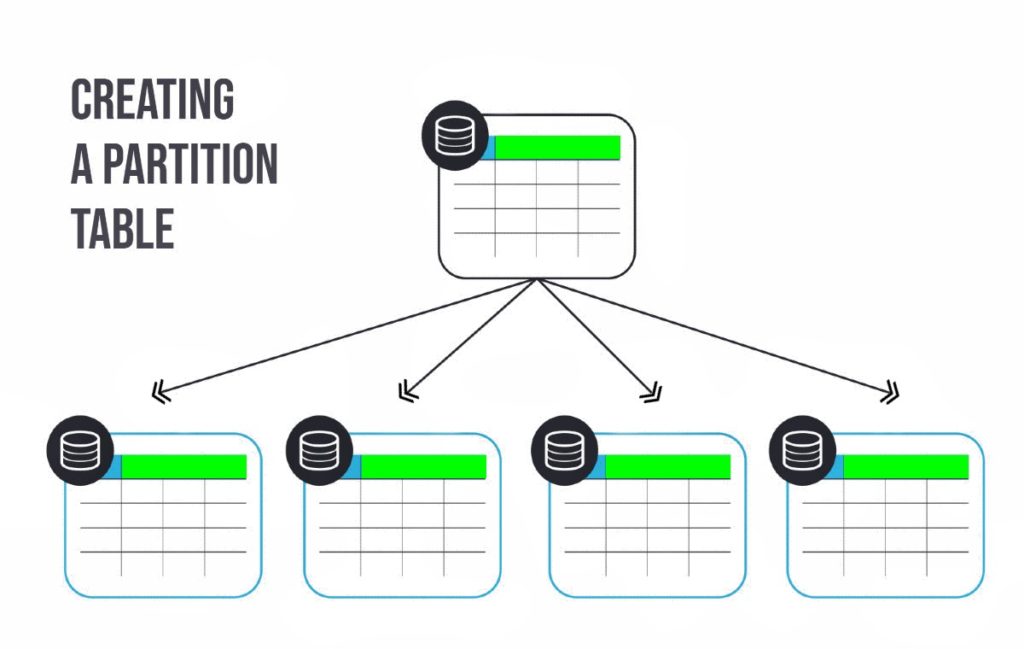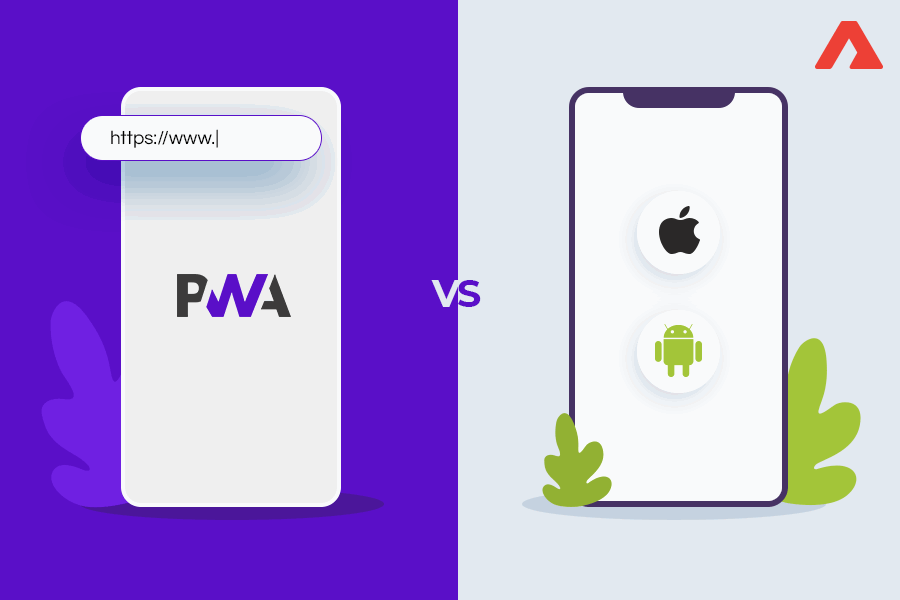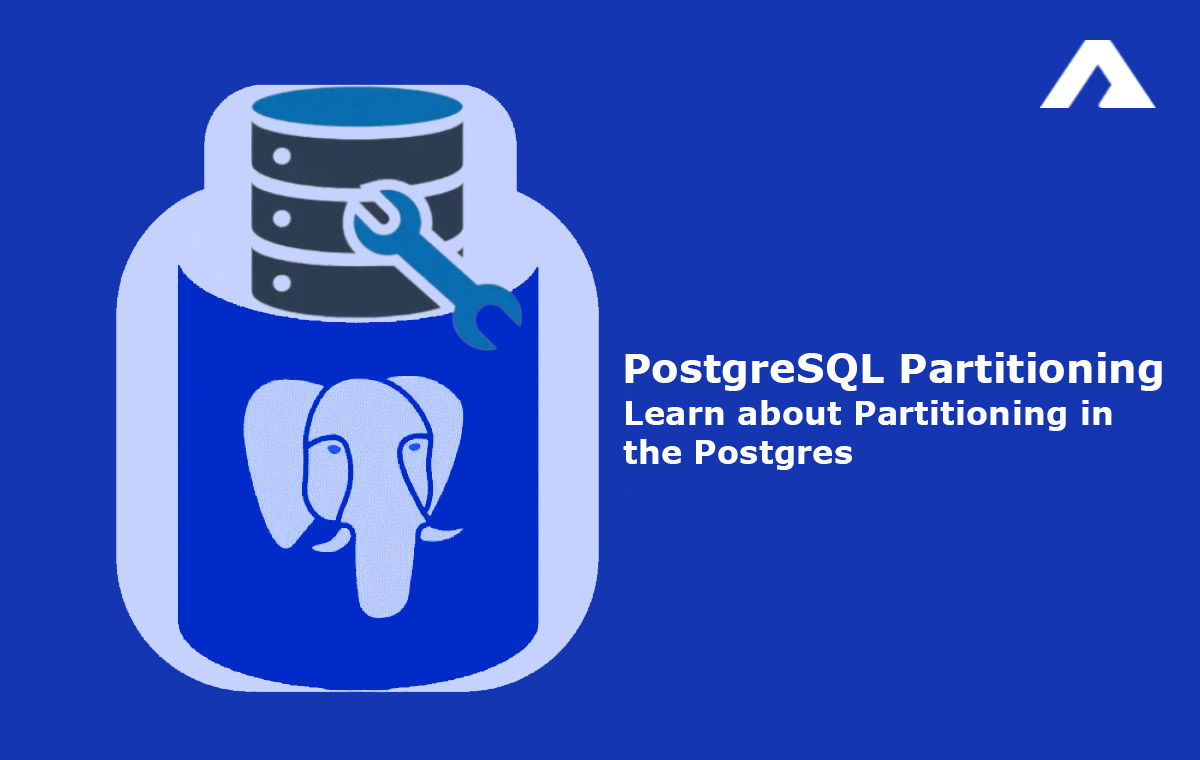Large amounts of data being stored in databases have a direct effect on scalability and performance. In order to address the effects of keeping enormous volumes of data in databases on performance and scalability, partitioning is a valuable strategy. Partitioning reduces problems with memory swapping and table scans by breaking huge tables into smaller ones, which improves speed. This strategy entails partitioning large datasets into more manageable and accessible units. A relational database management system called PostgreSQL, sometimes called Postgres, is used by many applications.
In what ways does partitioning work?
Partitioning is the process of breaking up a massive table into smaller physical pieces, each with its own unique traits and identifier, and storing them in different storage media according to their intended uses. By minimizing the number of rows that must be accessed, processed, and retrieved, this strategy dramatically improves database server speed. To further optimize database processes, PostgreSQL partitions can also be used to divide up indexes and indexed tables.
When to Use PostgreSQL Partitions?
Partitioning is indeed beneficial when a single table cannot meet the requirements for efficient data storage and retrieval. When dealing with a large amount of data that needs to be written to a table simultaneously, partitioning becomes a valuable technique to handle such scenarios effectively.
Types of Partitions
PostgreSQL partitions can be classified into two primary types: Vertical Partitioning and Horizontal Partitioning.
Vertical Partitioning involves dividing the table based on columns, where each partition contains a specific set of columns. This approach allows for more efficient storage and retrieval of data by only accessing the necessary columns for a particular query or operation.
Using horizontal partitioning, the table is divided into subpartitions based on rows. By dividing the data into multiple partitions, this partitioning technique improves performance. And reducing the overall size of each individual partition. And reducing the overall size of each individual partition.
Summary: Vertical Partitioning focuses on dividing columns, while Horizontal Partitioning focuses on dividing rows in order to optimize the storage and performance of PostgreSQL databases.
What is the process for creating a partition table?

General steps
Ensure that you have the necessary permissions to create tables and partitions.
Determine the criteria for partitioning your table, such as the partitioning column or range of values.
Enable table partitioning on the parent table using the PARTITION BY clause and specify the partitioning method (e.g., RANGE, LIST, HASH).
CREATE TABLE parent_table (
id SERIAL,
partition_column INT,
-- Other columns
PRIMARY KEY (id, partition_column)
) PARTITION BY RANGE (partition_column);Create individual child tables that will represent the partitions. These tables should inherit from the parent table and define the specific partition boundaries or conditions.
CREATE TABLE child_table_1 PARTITION OF parent_table
FOR VALUES FROM (START_VALUE) TO (TO_VALUE);Types of PostgreSQL Horizontal Partitions
PostgreSQL supports several types of partitions that can be used based on the specific requirements of your data and queries. Here are the commonly used partitioning methods in PostgreSQL:
Range partitioning In range partitioning, rows are divided into partitions based on a specified range of values from a partitioning column. A table can be partitioned based on date ranges or numeric ranges, for example.
Create a range-partitioned table based on date ranges
CREATE TABLE logs (
id SERIAL,
log_date DATE,
details TEXT,
-- Other columns
)
PARTITION BY RANGE (log_date);Create individual partitions for different date ranges
CREATE TABLE logs_q1 PARTITION OF logs
FOR VALUES FROM ('2023-01-01') TO ('2023-04-01');
CREATE TABLE logs_q2 PARTITION OF logs
FOR VALUES FROM ('2023-04-01') TO ('2023-07-01');Add more partitions for other date ranges
List partitioning involves dividing rows into partitions based on specific values from a partitioning column. Each partition contains a predefined list of values that determine which rows belong to it. This method is useful when you have discrete values for partitioning, such as year or category.
Create a list partitioned table based on product categories
CREATE TABLE logs (
id SERIAL,
name VARCHAR(100),
category VARCHAR(50),
-- Other columns
)
PARTITION BY LIST (category);Create individual partitions for different categories
CREATE TABLE products_electronics PARTITION OF products
FOR VALUES IN ('Electronics', 'Appliances');
CREATE TABLE products_clothing PARTITION OF products
FOR VALUES IN ('Clothing', 'Footwear');Add more partitions for other categories
Hash partitioning distributes rows across partitions based on a hash value computed from one or more columns. The advantage of hash partitioning is that it provides a relatively even distribution of rows across partitions, which can be beneficial for load balancing.
Create a hash partitioned table based on customer IDs
CREATE TABLE orders (
id SERIAL,
order_date DATE,
customer_id INT,
amount NUMERIC,
-- Other columns
)
PARTITION BY HASH (customer_id);Create individual partitions using hash partitioning
CREATE TABLE orders_1 PARTITION OF orders
FOR VALUES WITH (MODULUS 4, REMAINDER 0);
CREATE TABLE orders_2 PARTITION OF orders
FOR VALUES WITH (MODULUS 4, REMAINDER 1);Add more partitions for different hash values
Advantages of PostgreSQL Partitions
- Improved Performance: Partitioning allows for parallel processing and reduces the amount of data that needs to be scanned or processed for a specific operation. This can lead to significant performance gains, especially when dealing with large datasets.
- Scalability: Partitioning enables better scalability by distributing the data across multiple partitions. As the dataset grows, you can add more partitions, which helps to maintain performance and manageability.
- Data Organization: Partitioning facilitates logical data organization by dividing data into smaller, more manageable subsets. This can enhance data retrieval and data analytics operations, as you can focus on specific partitions or ranges instead of the entire dataset.
- Data Lifecycle Management: Partitioning provides an efficient way to manage data lifecycles, such as archiving or purging old data. You can easily drop or detach partitions that are no longer needed, without impacting the entire table or other partitions.
- Enhanced Indexing: Partitioning can also improve the efficiency of indexing. By aligning the partitioning scheme with index structures, queries can benefit from more targeted index scans, resulting in faster data access.
Conclusions
Partitioning in PostgreSQL is a useful approach for handling enormous volumes of data in databases. It has two primary types: vertical partitioning, which divides tables into columns, and horizontal partitioning, which divides tables into rows. By eliminating memory shifting and table scans, partitioning enhances speed. It allows for efficient data storage and retrieval by accessing only the columns that are required or spreading data across numerous partitions. Overall, PostgreSQL partitioning improves database management scalability, organization, and indexing efficiency.
All product and company names are trademarks™, registered® or copyright© trademarks of their respective holders. Use of them does not imply any affiliation with or endorsement by them.




 Insurance
Insurance























